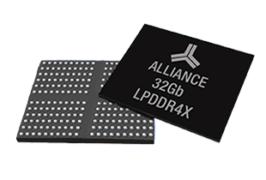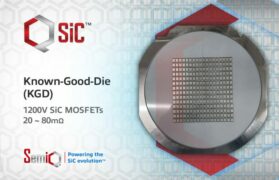While Terabytes Written (TBW) and Drive Writes Per Day (DWPD) can be useful methods for comparing SSD reliability in applications such as PCs and servers, they may be inaccurate for determining lifetime estimations of embedded Multi-Media Card (e-MMC) and Universal Flash Storage (UFS) devices in all applications if the actual workload in the application is different from either a JEDEC® defined workload or a vendor-specific workload.
Let’s understand how to correctly use lifetime calculations (also known as “TBW”) with e-MMC and / or UFS and see how KIOXIA is supporting customers in this task.
Understanding the parameters
One method used for determining the endurance of a flash storage device is to multiply its density by its maximum Program / Erase (P/E) cycle count. The result of this is “TBW” which is used to predict the amount of data (in terabytes) that are able to be written to memory before failure occurs. At the heart of this approach is the predictability of flash memory endurance which decreases linearly as the device is written to over its lifetime.
However, when calculating “TBW”, the Write Amplification Factor (WAF) needs to be included in the calculation, as the higher the WAF is, the lower the „TBW“ will be. WAF is an estimation that helps to define the ratio of physical writes made to flash memory divided by the logical writes delivered from the host, and is dependent upon the workload or size of data written. In general, small block-oriented writes to random logical block address locations will have a higher WAF than larger block writes to a sequential block address.
So, to calculate the “TBW” of an e-MMC or UFS device, it is necessary to calculate the WAF for that specific application. As published specifications cannot know the actual application, suppliers that provide a “TBW” figure will generally use either a JEDEC defined workload or a vendor-specific workload. However, using a WAF based upon the actual application workload is the most accurate and recommended method for determining the “TBW” of an e-MMC or UFS device.
Illustrating the point with worked examples
If we consider a camera / surveillance application where the engineer wants to use a 128GB UFS device for video recording and a second application where the same 128GB UFS is to be used in a network security application for data logging.
The device being considered is a 128GB UFS v3.1 device with a “TBW” value of 192TB based upon a vendor-specific workload of 16kB chunk sizes. The detailed calculation is 128GB * 3000 (W/E Cycles) / 2 (WAF) = 192TB using the formula above.
In the surveillance application, the system must record 180TB over the life of the camera, written sequentially in 16kB chunk sizes. As this matches the vendor-specific workload, the WAF is the same in the actual application and the vendor specification, so the 192TB figure will be accurate and, as the application requires a “TBW” of 180TB, the memory is suitable for the application.
The network security application needs to support less lifetime data (150TB) but, in this application, the data is being written randomly in 4kB chunk sizes. So, intuitively, the same memory should also be adequate in this application but, based upon the smaller chunk sizes, this is not a correct assumption.
The network security application needs to support less lifetime data (150TB) but, in this application, the data is being written randomly in 4kB chunk sizes. So, intuitively, the same memory should also be adequate in this application but, based upon the smaller chunk sizes, this is not a correct assumption.
As the application usage is different to that used to calculate the advertised “TBW” figure, the network engineer must request a calculated value that reflects a workload with 4kB chunk sizes. As UFS is not able to handle smaller chunk sizes as well as larger ones and the WAF is higher for this application, the calculated TBW for the device in this application was 96TB using this calculation 128GB * 3000 (W/E Cycles) / 4 (WAF) = 96TB. Clearly, the UFS memory is not going to have the necessary endurance for this application.
KIOXIA provides lifetime estimation analysis
Learn more about how you can make use of KIOXIA memories featuring RPMB technology.










